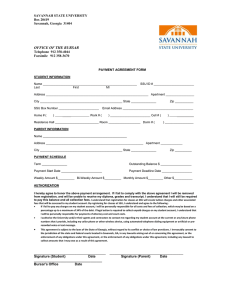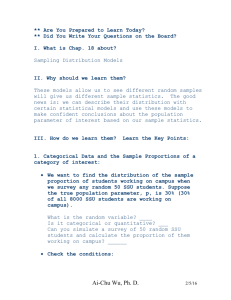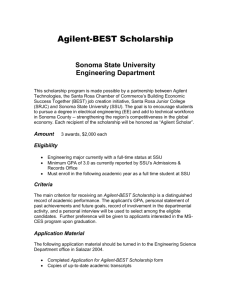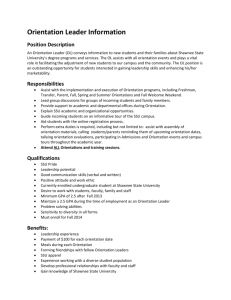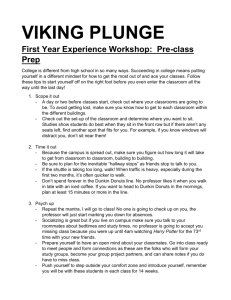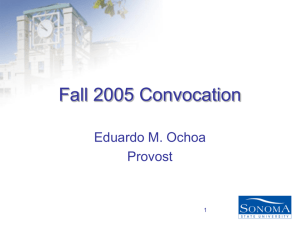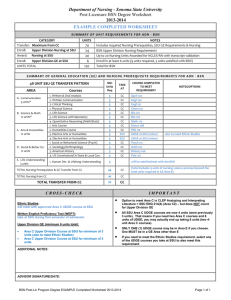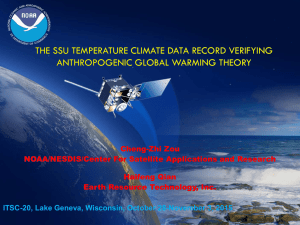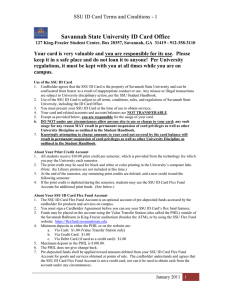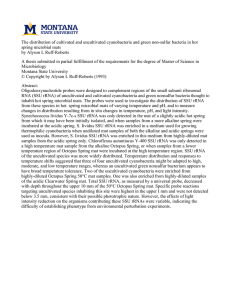S4_TLQ_0614 - Fermi Gamma
advertisement
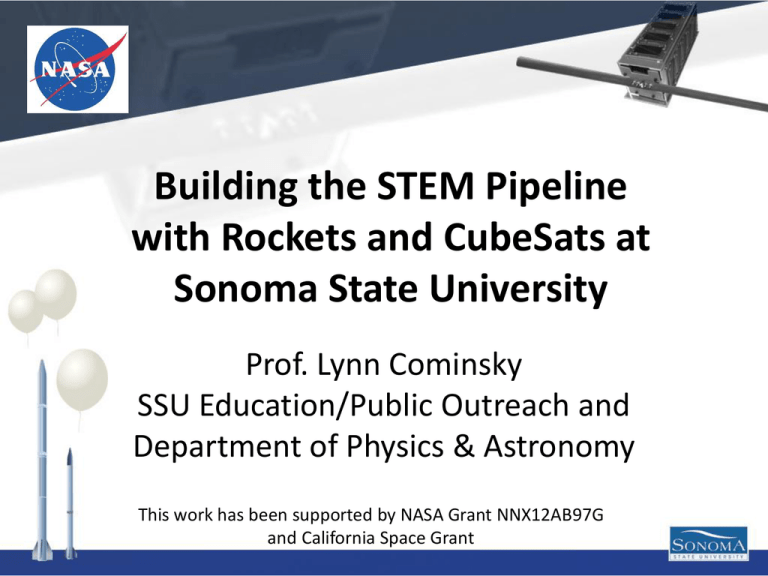
Building the STEM Pipeline with Rockets and CubeSats at Sonoma State University Prof. Lynn Cominsky SSU Education/Public Outreach and Department of Physics & Astronomy This work has been supported by NASA Grant NNX12AB97G and California Space Grant Broken Pipeline Problem The S4 Project • For the past 3 years, the SSU team has been learning how to fly rockets and balloons, while designing the S4 flight electronics and software • We have designed a “flight board” which includes base components and optional sensors and have written an educator guide with background information, instructions and additional resources. • Last summer, we trained a group of teachers to build these payloads and launched them at Lucerne dry lakebed in Southern California • This year, the teachers are building S4 payloads with their middle & high-school students and flying them on rockets or tethered balloons 3 Meet the S4 partners • Association of Experimental Rocketry of the Pacific (AeroPac) – the Northern CA/Nevada chapter of the Tripoli Rocketry Association – Tony Alcocer – President – Ken Biba – Education Director • Endeavour Institute – Balloon Fests – Steve Kliewer, Director • We also partner with a few other rocket clubs: LUNAR (Livermore Unit of NAR) and ROC (Rocketry Organization of California) for launches s4.sonoma.edu 4 ARLISS as the inspiration for S4 • AeroPac and Bob Twiggs started A Rocket Launch for International Student Satellites (ARLISS) over 10 years ago • University students from across the globe come to the Black Rock playa to launch payloads which are ejected from the rockets • Mostly students from Japan, but also Korea, India, Turkey, and a few from the USA 5 S4 Payload S4 Teacher Training – July 2013 Aero Institute, Palmdale Ca • 18 educators from a diverse set of schools and other teaching organizations • Week long course • Built, tested and flew a prototype payload • Helped us refine our educational materials and the payload itself • Included talks from our partners and mentors SSU students build and launch PocketQube – Nov 2013 • SSU student Kevin Zack designed the S4 board • He then started working on the PocketQube project • PocketQubes are smaller than traditional CubeSats • Our “3P” satellite was 15 x 5 x 5 cm & weighed about 0.5 kg • It was launched from Unisat5, an Italian satellite that was launched from the Russian rocket Dnepr-1 SSU Vacuum testing Sean McNeil (MSU) integrating with Unisat-5 in Italy UniSat-5 launched several CubeSats and PocketQubes • Collaboration between SSU and Morehead State University • SSU provided the electronics • MSU provided the solar panels, structure and integration with Unisat-5 • After launch on Russian Dnepr-1, we renamed the satellite T-LogoQube Dnepr-1 http://universe.sonoma.edu/T-LogoQube T-LogoQube team with Yagi antenna at the Little H-bar Ranch: L to R – Hunter Mills, Ben Cunningham, Kevin Zack, Steve Anderson, Aaron Pacheco (SRJC), Garrett Jernigan and Lynn Cominsky First packets detected using the Yagi antenna at 437.465 +- 0.012 MHz Next steps • Middle and high school students are building S4 payloads and flying them this spring and summer • SSU has partnered with NAR and AeroPac to offer S4 flights to up to 5 of the TARC finalists (since NSLI was cancelled for this year) • SSU students are working on next CubeSat – x-ray detector to be launched by Nanoracks from the ISS • SSU students have received partial funding from national SPS award to build Yagi antenna • California Space Grant funding hired 2 interns from local community colleges + 1 SSU student to work on the S4 and CubeSat projects this summer and to buy the rest of the parts for the new Yagi antenna • Formation of all female PocketQube team at SSU For more information about these projects visit: To see all our projects:
